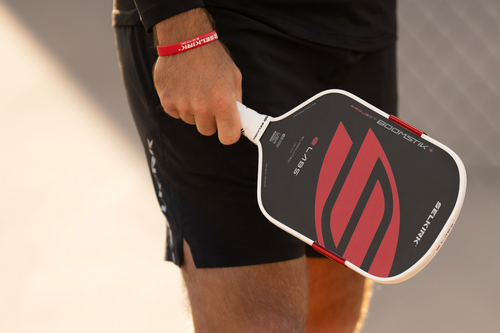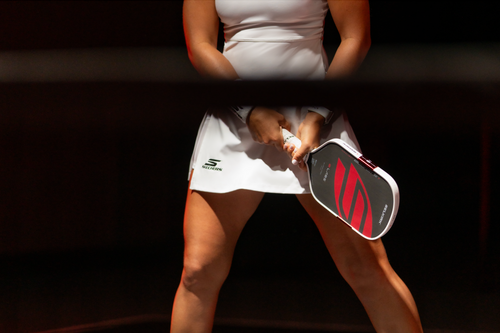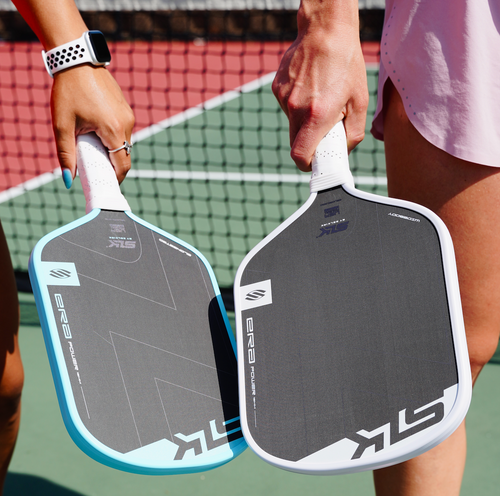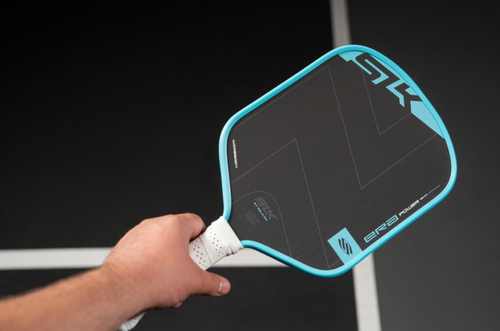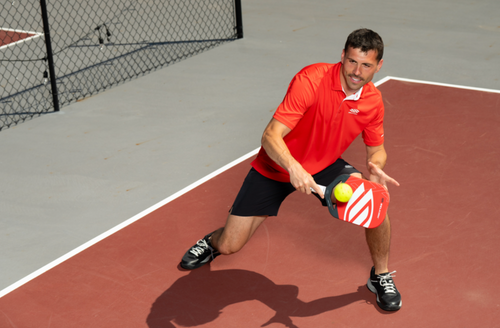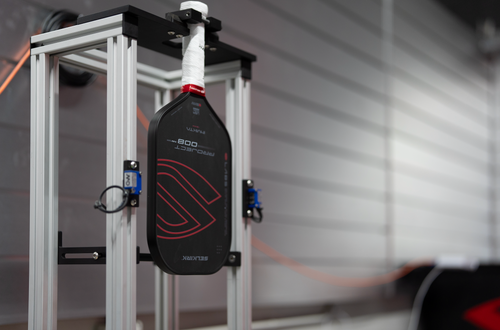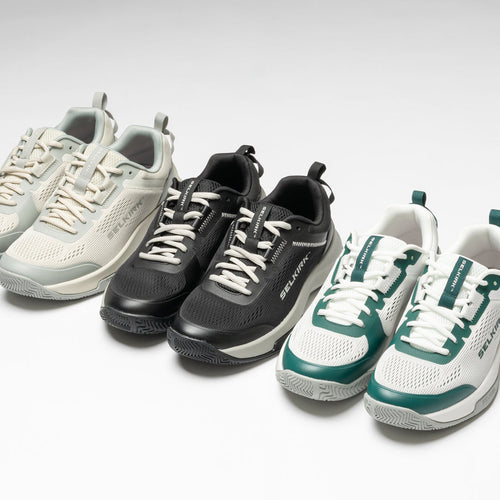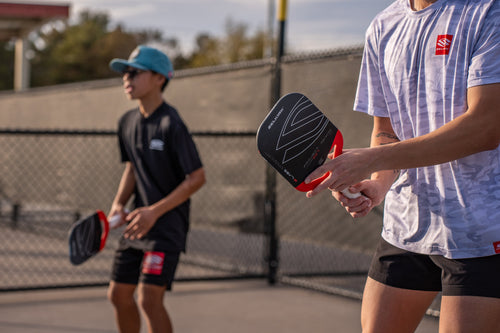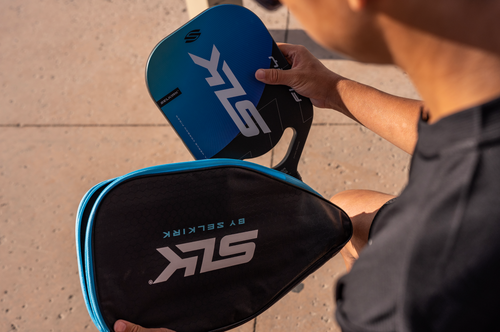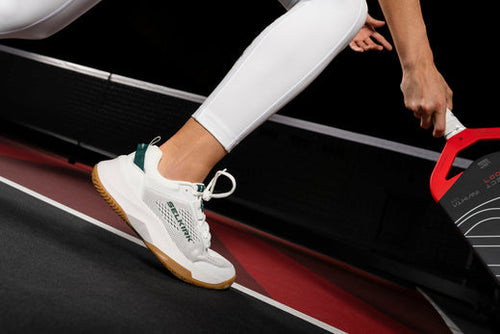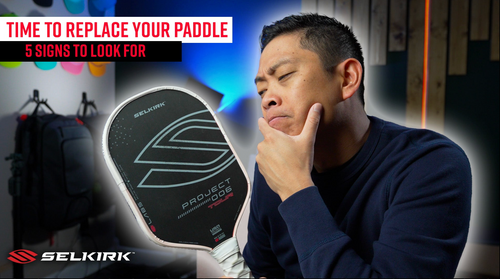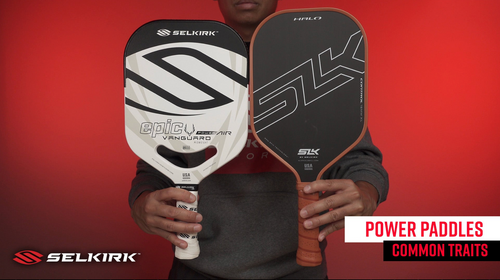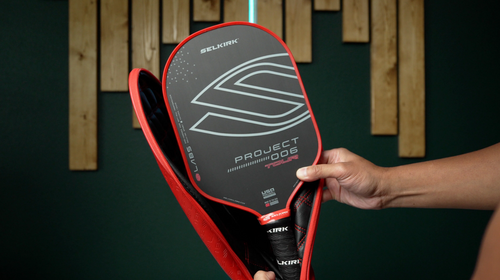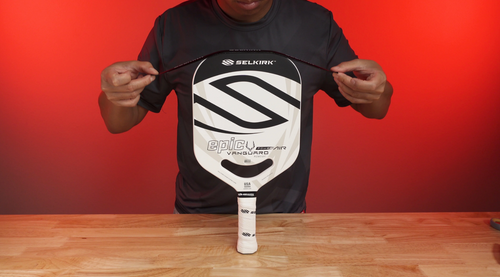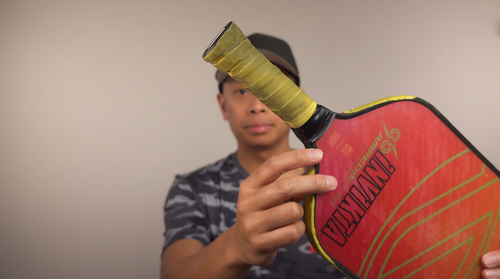referred you!
Shop and spend $50+ to get your free gift. Free gift will be added at checkout. Valid for new customers only.
Shop Best Sellers NowWe're sorry, self-referrals are not allowed.
We're sorry, but the referral link you used is not valid.
Notify Me
Thank you!
Understanding twist weight: The key to paddle stability
Read MoreAnother essential aspect of pickleball paddle performance is twist weight, a measurement that refers to how a paddle rotates around a vertical axis.
Twist weight goes hand-in-hand with swing weight, and both are critical when considering paddle options.
Understanding static and swing weight
Static weight quantifies the paddle's weight at rest, without any movement. On the other hand, swing weight gauges how heavy a paddle feels during swings, providing insights into its dynamic performance.
What is twist weight?
Twist weight evaluates the paddle's resistance to twisting along its vertical axis, a crucial aspect known as torsional stability.
Imagine this: You're in the midst of an intense rally, and you hit the ball slightly off-center. In this scenario, some of the energy isn't effectively transferred into your shot but instead dissipates into the twisting motion of the paddle in your hand.
Paddles with higher twist weights minimize this rotation upon contact, effectively channeling more energy back into your shot. This translates to a larger and more forgiving sweet spot, providing a smoother playing experience.
Twist weight's impact on paddle design
Paddles with wider, more standard shapes typically have better twist weights. Additional mass concentrated near the edges of the paddle face contributes to higher torsional stability, reducing rotation upon off-center impacts.
In contrast, elongated paddles may exhibit lower twist weights, impacting overall stability and forgiveness.
How to enhance twist weight
If you're looking to boost your paddle's twist weight, consider adding lead or tungsten tape to the edges.
However, it's essential to strike the right balance, as adding weight may inadvertently decrease the paddle's speed and maneuverability. Experimentation is key to finding the optimal setup that aligns with your playing style.
More Content for You
Search for a specific topic or browse by the categories below.
All Content
Can't find what you're looking for?
LET US KNOW WHAT YOU'D LIKE OUR NEXT VIDEO TO COVER!
Submit an Idea











